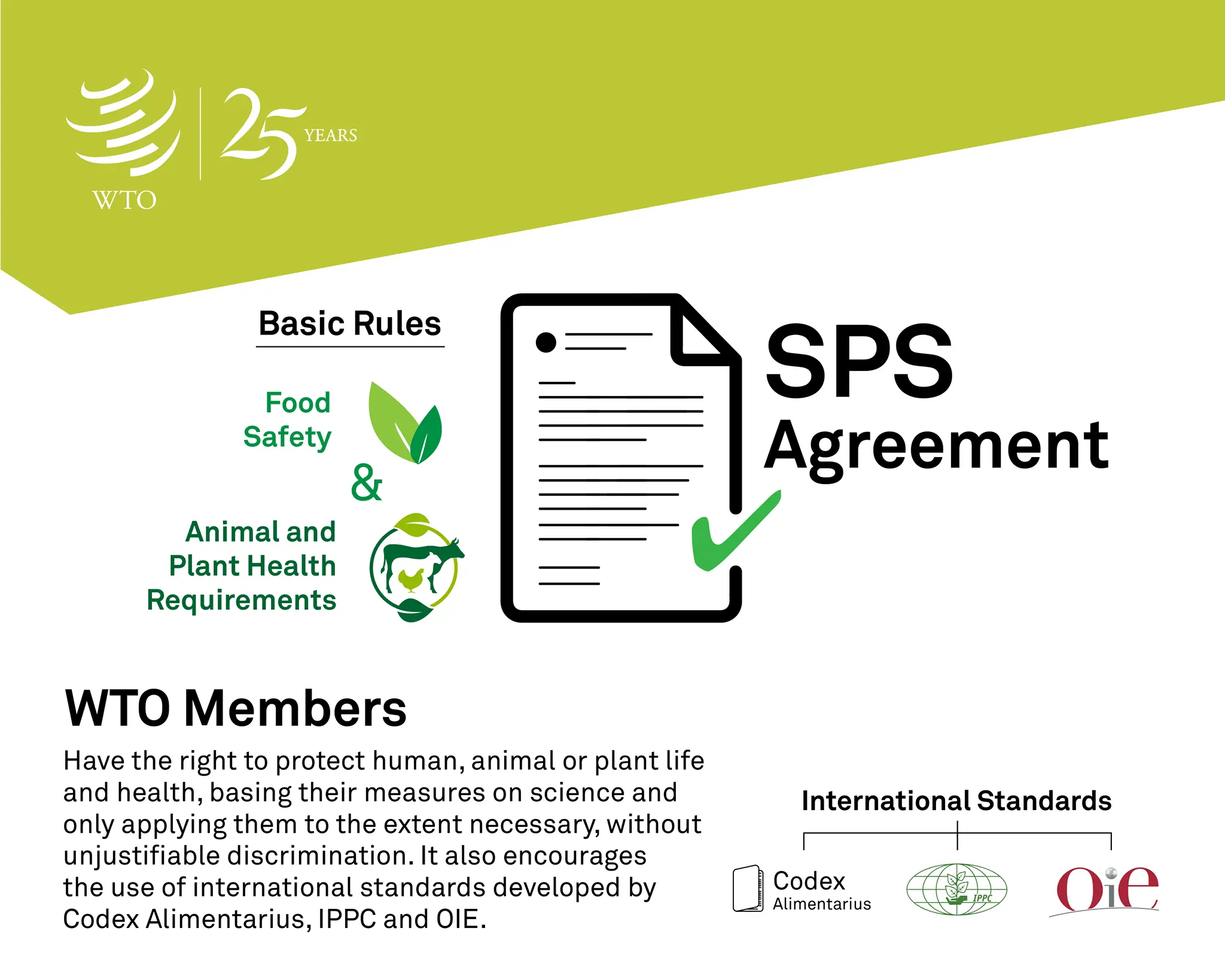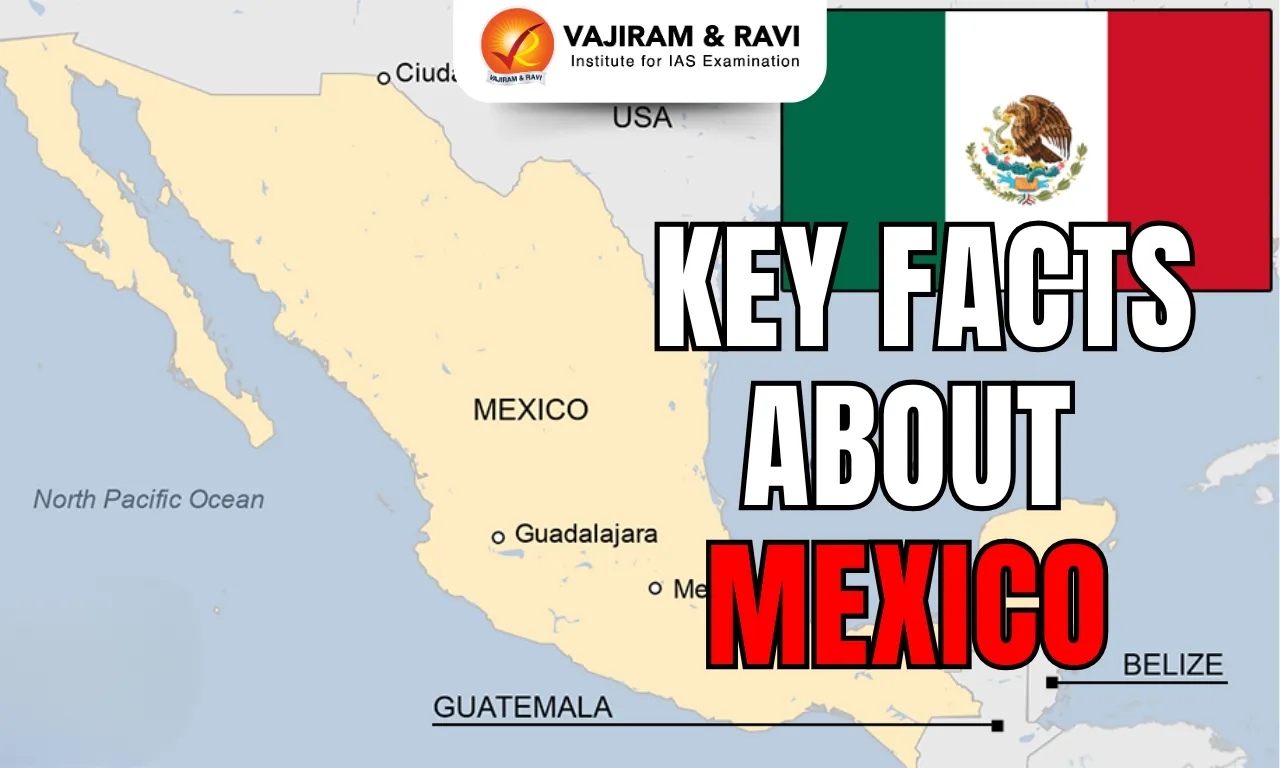About SPS Agreement:
- The Agreement on the Application of Sanitary and Phytosanitary Measures (SPS Agreement) is a treaty of the World Trade Organization (WTO) that came into force with the establishment of the WTO on January 1, 1995.
- It sets out the basic rules for food safety and animal and plant health standards.
Key Provisions
- Scientific basis: SPS measures must be based on scientific principles and sufficient evidence, except for provisional measures.
- Harmonization: Members are encouraged to align SPS measures with international standards set by bodies like Codex Alimentarius, OIE, and IPPC.
- Equivalence: SPS measures of other countries should be accepted as equivalent if they achieve the same level of protection.
- Risk assessment: Countries must conduct risk assessments to determine the appropriate level of protection, considering the impacts of pests or diseases.
- Regionalization: Members should recognize pest- or disease-free areas and areas of low prevalence, even if within a single country or group of countries.
- Transparency: Countries must notify changes in SPS measures and provide regulatory information through the WTO’s SPS notification system.
Dispute Resolution: These disputes can be taken to the WTO’s Dispute Settlement Body (DSB) if consultations fail.
Q1. What is the WTO’s Dispute Settlement Body?
The Dispute Settlement Body of the World Trade Organisation (WTO) makes decisions on trade disputes between governments that are adjudicated by the Organisation.
Last updated on December, 2025
→ Check out the latest UPSC Syllabus 2026 here.
→ Join Vajiram & Ravi’s Interview Guidance Programme for expert help to crack your final UPSC stage.
→ UPSC Mains Result 2025 is now out.
→ UPSC Notification 2026 is scheduled to be released on January 14, 2026.
→ UPSC Calendar 2026 is released on 15th May, 2025.
→ The UPSC Vacancy 2025 were released 1129, out of which 979 were for UPSC CSE and remaining 150 are for UPSC IFoS.
→ UPSC Prelims 2026 will be conducted on 24th May, 2026 & UPSC Mains 2026 will be conducted on 21st August 2026.
→ The UPSC Selection Process is of 3 stages-Prelims, Mains and Interview.
→ UPSC Result 2024 is released with latest UPSC Marksheet 2024. Check Now!
→ UPSC Prelims Result 2025 is out now for the CSE held on 25 May 2025.
→ UPSC Toppers List 2024 is released now. Shakti Dubey is UPSC AIR 1 2024 Topper.
→ UPSC Prelims Question Paper 2025 and Unofficial Prelims Answer Key 2025 are available now.
→ UPSC Mains Question Paper 2025 is out for Essay, GS 1, 2, 3 & GS 4.
→ UPSC Mains Indian Language Question Paper 2025 is now out.
→ UPSC Mains Optional Question Paper 2025 is now out.
→ Also check Best IAS Coaching in Delhi

















